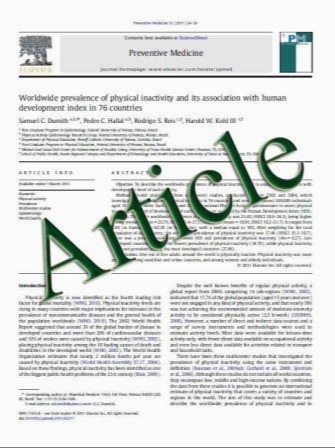Breast cancer screening in BRCA1 and BRCA2 mutation carriers after risk reducing salpingo-oophorectomy
- نوع فایل : کتاب
- زبان : انگلیسی
- مؤلف : Ingrid E. Fakkert Liesbeth Jansen Kees Meijer Theo Kok Jan C. Oosterwijk Marian J. E. Mourits Geertruida H. de Bock
- چاپ و سال / کشور: 2011
Description
Breast cancer screening is offered to BRCA1 and BRCA2 mutation carriers from the age of 25 years because of their increased risk of breast cancer. As ovarian cancer screening is not effective, risk-reducing salpinghooophorectomy (RRSO) is offered after child bearing age. RRSO before menopause reduces the breast cancer risk as well as breast density. It can be questioned whether after premenopausal RRSO, the intensive breast cancer screening program needs modification. We evaluated the effectiveness of breast cancer screening by clinical breast examination (CBE), mammography, and MRI in a population of 88 BRCA1 and 51 BRCA2 mutation carriers who had RRSO before the age of 52. Sensitivity, specificity, positive predictive value (PPV), and negative predictive value (NPV) were calculated for each screening modality. During 422 women years, 14 breast cancers were diagnosed; 2 prevalent, 10 screen detected and 2 interval breast cancers (12 in BRCA1 and 2 in BRCA2 mutation carriers). Sensitivity, specificity, PPV, and NPV for the combined screening were 85.7%, 97.6%, 30.0%, and 99.8%, respectively. No tumors were found with CBE, MRI had a sensitivity of 60.0% and mammography of 55.6%. Off all the tumors, 60% were node positive. Effectiveness of CBE and mammography was comparable to earlier findings. MRI screening seemed less effective than earlier findings. Afterm RRSO, the breast cancer risk in BRCA1 and BRCA2 mutation carriers is still high enough to justify intensive breast cancer screening with MRI and mammography.
Breast Cancer Res Treat (2011) 129:157–164 DOI 10.1007/s10549-011-1423-4 Received: 18 February 2011 / Accepted: 21 February 2011 / Published online: 4 March 2011 Springer Science+Business Media, LLC. 2011


